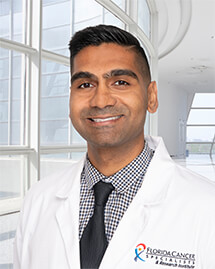Uterine leiomyosarcoma
Dr. Anjan Patel's Thoughts
ABSTRACT
Uterine leiomyosarcoma is a rare and heterogeneous gynecological malignancy that poses a significant clinical challenge due to its aggressive nature and limited treatment options. Its multifactorial etiopathogenesis involves complex cytogenetic and molecular aberrations, including TP53, RB1, and chromothripsis-associated gene alterations. The non-specific clinical presentation, resembling other benign conditions, complicates early and accurate diagnosis, alongside intricate radiological and pathological patterns. Advanced imaging techniques, such as magnetic resonance imaging and computed tomography, are employed to differentiate uterine leiomyosarcoma from benign conditions, but no single test is definitive. For FIGO (International Federation of Gynecology and Obstetrics) stage I uterine leiomyosarcoma, treatment consists of en bloc total hysterectomy ± bilateral salpingo-oophorectomy. Patients with stage II to IV disease amenable to complete resection can undergo surgery followed by adjuvant systemic therapy and/or radiotherapy. Lymphadenectomy is unnecessary in patients lacking bulky nodes. Unresectable or unsuitable cases warrant primary systemic therapy and/or radiotherapy. Managing recurrent disease requires a multimodal approach tailored to factors such as the site and number of metastases, prior radiotherapy, and resectability. Multidisciplinary management and centralization in referral centers are crucial for individualized decision-making. Ongoing research explores the intricate cytogenetic and molecular aberrations of uterine leiomyosarcoma, paving the way for personalized treatment strategies. This review, developed following the European Society of Gynaecological Oncology/Gynecologic Cancer InterGroup/European Reference Network on Rare Adult Solid Cancers guidelines, explores the clinical presentation, diagnostic challenges, and evolving therapeutic strategies for uterine leiomyosarcoma, while also highlighting variations in clinical practice worldwide.
